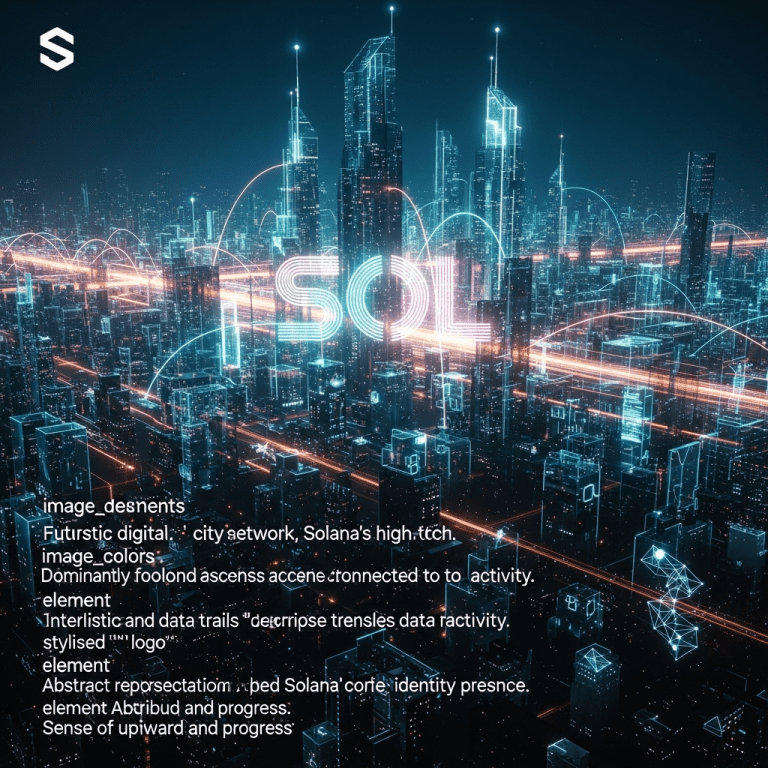As we look to the future of decentralized finance and blockchain innovation, Solana’s upcoming architectural changes and why they matter have taken center stage in the crypto community. The high-performance blockchain, renowned for its speed and scalability, is preparing to roll out a series of critical upgrades designed to address some of its most pressing challenges and position itself as a leader in the next era of Web3.
Understanding Solana’s Upcoming Architectural Changes and Why They Matter
Solana’s developers have announced a plan to fundamentally enhance the network’s architecture in 2025. These changes are not just technical improvements—they promise to reshape how users, developers, and investors interact with the ecosystem. Understanding the details and implications of these upgrades is vital for anyone invested or interested in Solana’s future.
The Rationale Behind Solana’s Evolution
Solana’s rapid growth has exposed scaling bottlenecks and network outages, which have drawn criticism despite its remarkable transaction throughput. The upcoming architectural changes aim to solve these issues by:
- Enhancing reliability and uptime.
- Scaling without sacrificing decentralization or security.
- Making development easier and more predictable for dApps.
With these improvements, Solana is targeting increased adoption not only among retail users but also major institutional players.
Key Components of the 2025 Solana Architecture Overhaul
The most pivotal changes in Solana’s architecture include:
1. Modular Design and Execution Layers
One of the flagship updates is the move to a modular design. By decoupling consensus, execution, and data availability layers, Solana will enable greater flexibility for developers and reduce the likelihood of entire-network slowdowns. This modularity allows for better specialization of node roles and lays the groundwork for parallelized transaction execution at scale.
2. Enhanced Consensus Protocol
Solana’s unique Proof of History (PoH) will be upgraded to synchronize more seamlessly with the underlying Proof of Stake. The objective is to strengthen overall security and minimize vulnerabilities to potential exploits, setting a new standard for blockchain reliability in 2025. Learn more on decentralized finance investment platforms.
3. State Compression and Lightweight Nodes
To make Solana accessible to a global user base, state compression techniques will reduce the hardware requirements for running validator nodes. This step is crucial in making Solana more decentralized, empowering users in emerging markets, and reducing the risk of centralization by large node operators.
4. Improved Transaction Fee Markets
Solana’s fee mechanism will become more dynamic and responsive to network congestion. The anticipated introduction of “local fee markets” will allow specific applications or subnetworks to adjust fees independently, smoothing out spikes and preventing one dApp from congesting the whole network. This benefits NFT launches, DeFi protocols, and high-frequency trading apps alike. Dive more into the role of fee markets on blockchain scalability.
Why These Changes Matter for Developers, Users, and Investors
The ramifications of Solana’s upcoming architectural changes and why they matter extend far beyond technical optimization. Here’s why:
Unlocking Developer Innovation
The modular, upgraded architecture will lower the barriers to entry for teams building on Solana. Improved documentation, better tooling, and predictable transaction flows reduce the risk of dApp outages and help onboard new developers from both traditional tech and other blockchain ecosystems.
Empowering End Users With Performance and Reliability
Users who demand fast, cheap transactions—such as those engaging in gaming, NFT marketplaces, and decentralized exchanges—stand to benefit most. Longer uptimes, lower fees, and fewer failed transactions contribute to a seamless experience, which is critical for mass Web3 adoption.
Reassuring Institutional Investors
Institutions want to minimize risk. The upgraded protocols and enhanced security mechanisms will help position Solana as a viable alternative to legacy financial rails and other major blockchains, attracting significant capital into its ecosystem. Stay up to date with the latest institutional trends on crypto news sites.
Potential Challenges and the Path Forward
Like any ambitious upgrade, Solana’s architectural changes are not without risks. Potential hurdles include:
- Initial instability as new features are rolled out.
- Shifts in developer tooling requiring retraining.
- Coordinating large-scale validator upgrades across a global network.
Nevertheless, transparent communication from the Solana Foundation and robust open-source collaboration bode well for the transition’s success. With well-defined upgrade paths and community incentives, these innovations could usher in a new chapter of blockchain usability and adoption in 2025.
Conclusion: Strategic Importance of Solana’s Upcoming Architectural Changes
In summary, Solana’s upcoming architectural changes and why they matter cannot be overstated for anyone interested in the future of blockchain. These enhancements promise to make Solana more secure, scalable, and developer-friendly—directly addressing key pain points of the past. If successfully implemented, they could propel Solana to the forefront of the next wave of crypto innovation.









